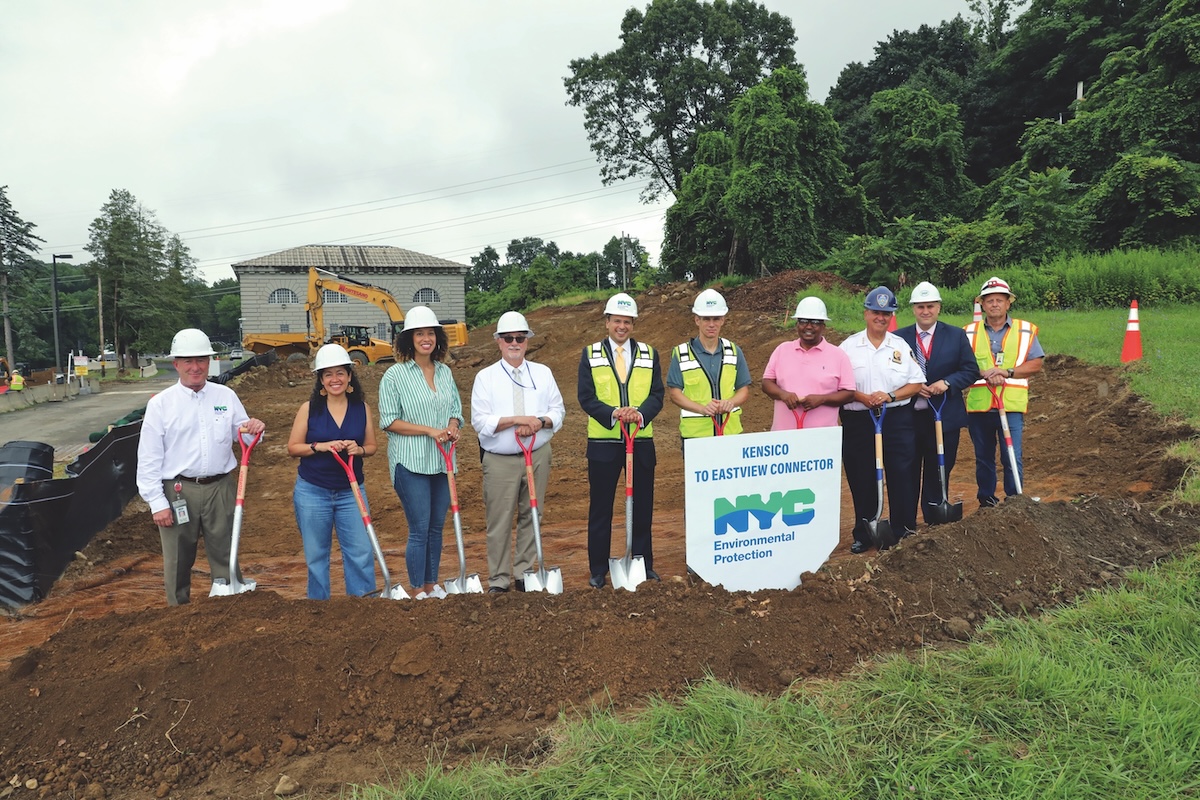After a prolonged dry spell coming out of the pandemic, contracts are now coming in fast and furious for Sylmar-based civil construction company Tutor Perini Corp.
In the space of eight days in late October, Tutor Perini announced that it and/or its subsidiaries had been awarded three contracts – two for more than $1 billion. That follows the company’s announcement earlier in the month of a final contract for a $1.66 billion rail project in Honolulu.
And the company gave an update on another contract it hopes to get: a contract award that could be worth about $4 billion to build a new jail on New York City’s Manhattan Island.
Water tunnel contract
The first of this latest trio of projects was announced Oct. 23. Frontier-Kemper Constructors, an Evansville, Indiana-based subsidiary of Tutor Perini, was awarded a $1.1 billion contract from the New York City Department of Environmental Protection to build a water conveyance tunnel in Westchester County in New York.
The approximately 2-mile-long tunnel roughly 500 feet underground will connect the Kensico Reservoir that supplies drinking water to New York City to an ultraviolet light disinfection facility. It will supplement an existing tunnel, allowing for operational resiliency and redundancy for the city’s water supply system, especially when other parts of the aging system are taken out of service for maintenance.

Work for Frontier-Kemper is expected to begin in the coming months with substantial completion expected in 2030. (Work on the overall $1.9 billion project began with a groundbreaking over the summer.)
The tunnel project includes the construction of two new shafts connecting to the surface and the use of a tunnel boring machine. The completed tunnel will have a diameter of 27 feet.
Health campus, harbor repair and jail construction contracts
The second project was announced on Oct. 29, though Tutor Perini was very light on specifics.
Tutor Perini subsidiary Rudolph and Sletten, which is headquartered in Menlo Park, was awarded a contract valued at “more than $1 billion” to build a health care campus somewhere in California. The project scope of work includes the construction of a new hospital, an energy center and a parking garage. Work is expected to begin in late 2024 with substantial completion anticipated in 2029.
Tutor Perini did not disclose the location of the hospital/health care campus nor the owner-operator of the campus.
The next day, Oct. 30, Tutor Perini announced that a joint venture between it and Honolulu-based construction contractor Nan Inc. was awarded a $331 million contract from the Naval Facilities Engineering Systems Command, Marianas, for repairs and restoration work at Apra Harbor in the Pacific island territory of Guam.
This harbor, part of the U.S. Naval Base, Guam, suffered significant damage from a series of storms, most notably Typhoon Mawar in May of last year.
The Tutor Perini-Nan joint venture team will be repairing the breakwater in the harbor, which was breached in three separate locations, as well as various other repairs and upgrades to the harbor. The contract includes options for future work that, if exercised, could add up to $230 million to the total contract value.
Finally, on Nov. 6, Tutor Perini announced that a joint venture it formed with Torrington, Connecticut-based construction company O&G Industries Inc. has been named the “apparent selected proposer” by the New York City Department of Design and Construction to build a new jail in Manhattan that is estimated to cost around $4 billion. The joint venture will now negotiate contract terms with the city; if those negotiations are successful, it expects to be awarded the design-build contract.
Record contract backlog
Also on Nov. 6, Tutor Perini released its third quarter earnings report. Revenue for the quarter was $1.08 billion, up slightly from $1.06 billion for the same quarter last year. The company reported a net loss of $101 million for the quarter, which was larger than the $37 million loss for the same quarter last year. The company attributed the larger loss to $152 million in net charges related to the resolution of various disputed balances.
Ronald Tutor, chief executive of Tutor Perini, focused his comments on the contract wins during the third quarter.
“We have tremendous momentum with several large new project wins in the third quarter that resulted in a new record backlog of $14 billion,” Tutor said. “This backlog provides us a solid foundation upon which we expect to build a profitable, multi-year revenue stream, with the potential for significant continued growth over the next few months as we look to finalize the contract for the multi-billion-dollar Manhattan Jail…and pursue other large projects.”
Tutor added that with the resolution of the disputed balances, the company expects to return to profitability next year.Tutor Perini Ronald Tutor Sylmar construction infrastructure rail jail tunnel 2024
